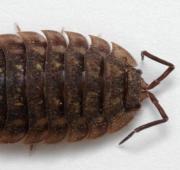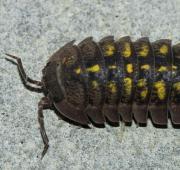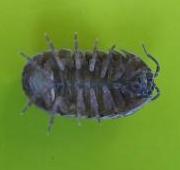 The woodlouse is not an insect but a crustacean, that has 14 parts to its body, which gives the woodlouse the flexibility to be able to curl into a ball to protect itself from danger. This means that only the hard outer shell of the woodlouse is exposed.
The woodlouse is not an insect but a crustacean, that has 14 parts to its body, which gives the woodlouse the flexibility to be able to curl into a ball to protect itself from danger. This means that only the hard outer shell of the woodlouse is exposed. The woodlouse is found in dark, damp places in forests and jungles throughout the world. The woodlouse feeds on decaying leaf and plant matter on the forest floor, meaning that the woodlouse plays a vital role in the natural carbon dioxide cycle.
The woodlouse is found in dark, damp places in forests and jungles throughout the world. The woodlouse feeds on decaying leaf and plant matter on the forest floor, meaning that the woodlouse plays a vital role in the natural carbon dioxide cycle.


The woodlouse is generally grey or brown in colour but the exact colour and size of the woodlouse is dependent on the woodlouse species and the area which the woodlouse inhabits. The woodlouse is found in nearly every environment in the world besides the polar regions and the arid desert.
The woodlouse is a herbivorous animal and therefore only eats organic plant matter. The woodlouse rarely eats live plants and feeds on the decaying leaf and plant matter found on the forest floor such as leaves, rotting wood and fruits that fall from the trees above.
Due to the small size of the woodlouse and despite the fact that the woodlouse can attempt to protect itself by curling up into a ball, the woodlouse is preyed upon by a number of animals around the world. Toads, centipedes, spiders, millipedes and the occasional wasp are the main predators of the woodlouse.
The female woodlouse lays around 24 eggs which she keeps inside a brood pouch. The woodlouse eggs hatch after an incubation period of just a few days exposing the woodlouse babies. Due to the fact that the baby woodlice take a number of months to fully develop, the mother woodlouse will often stay close to her young until they are adult woodlice.

